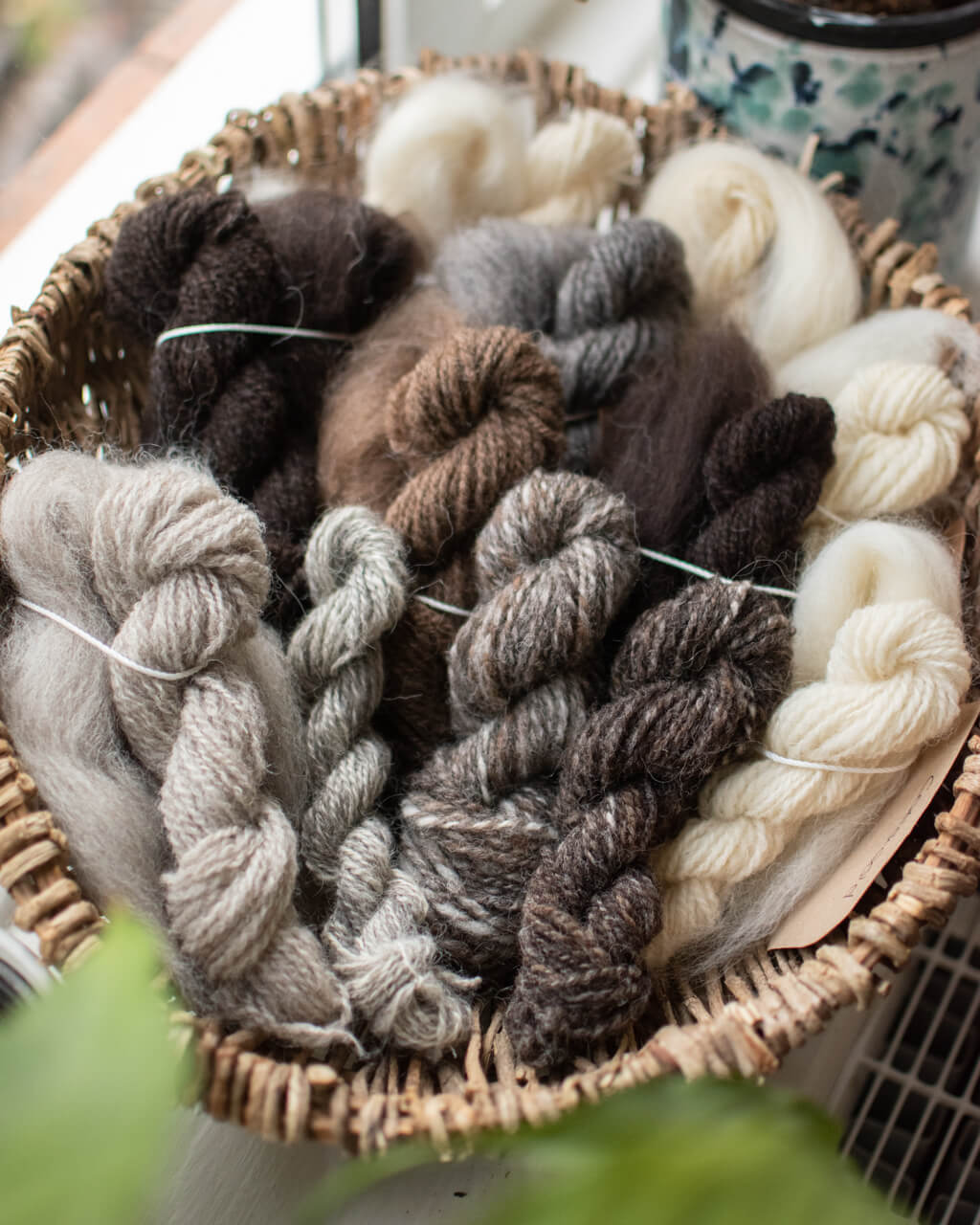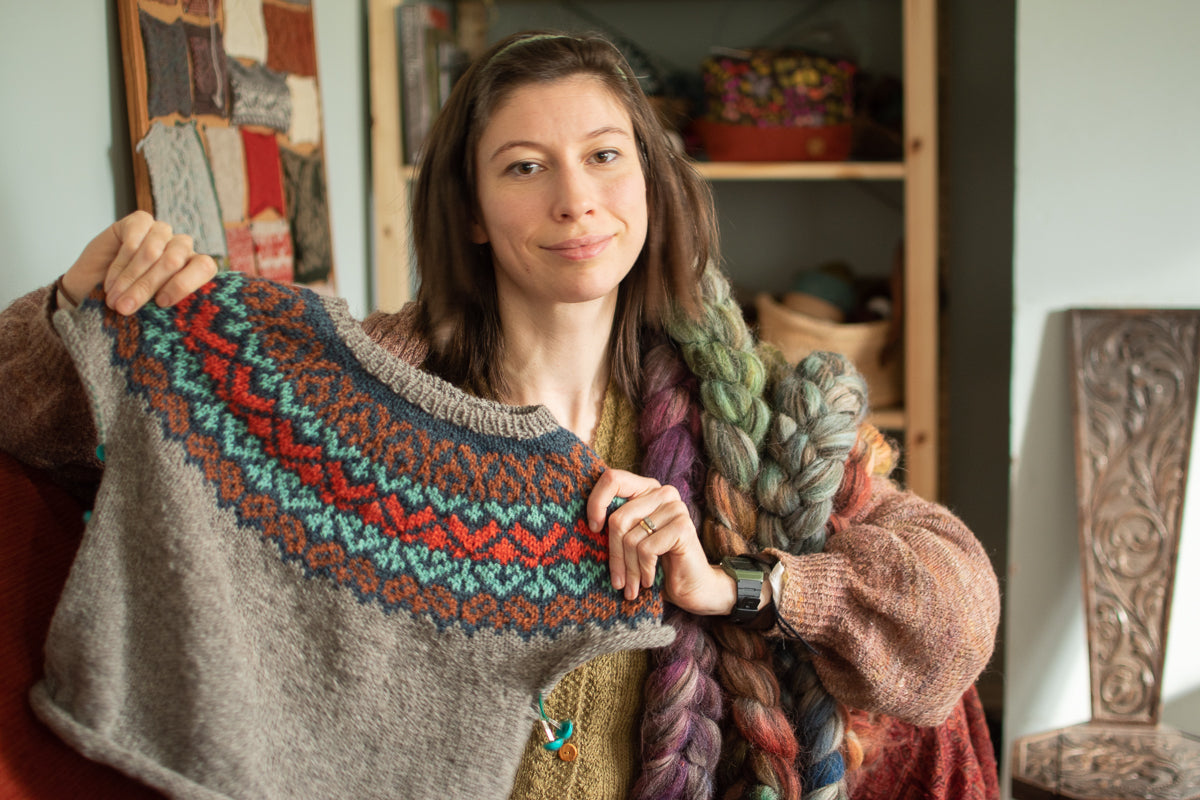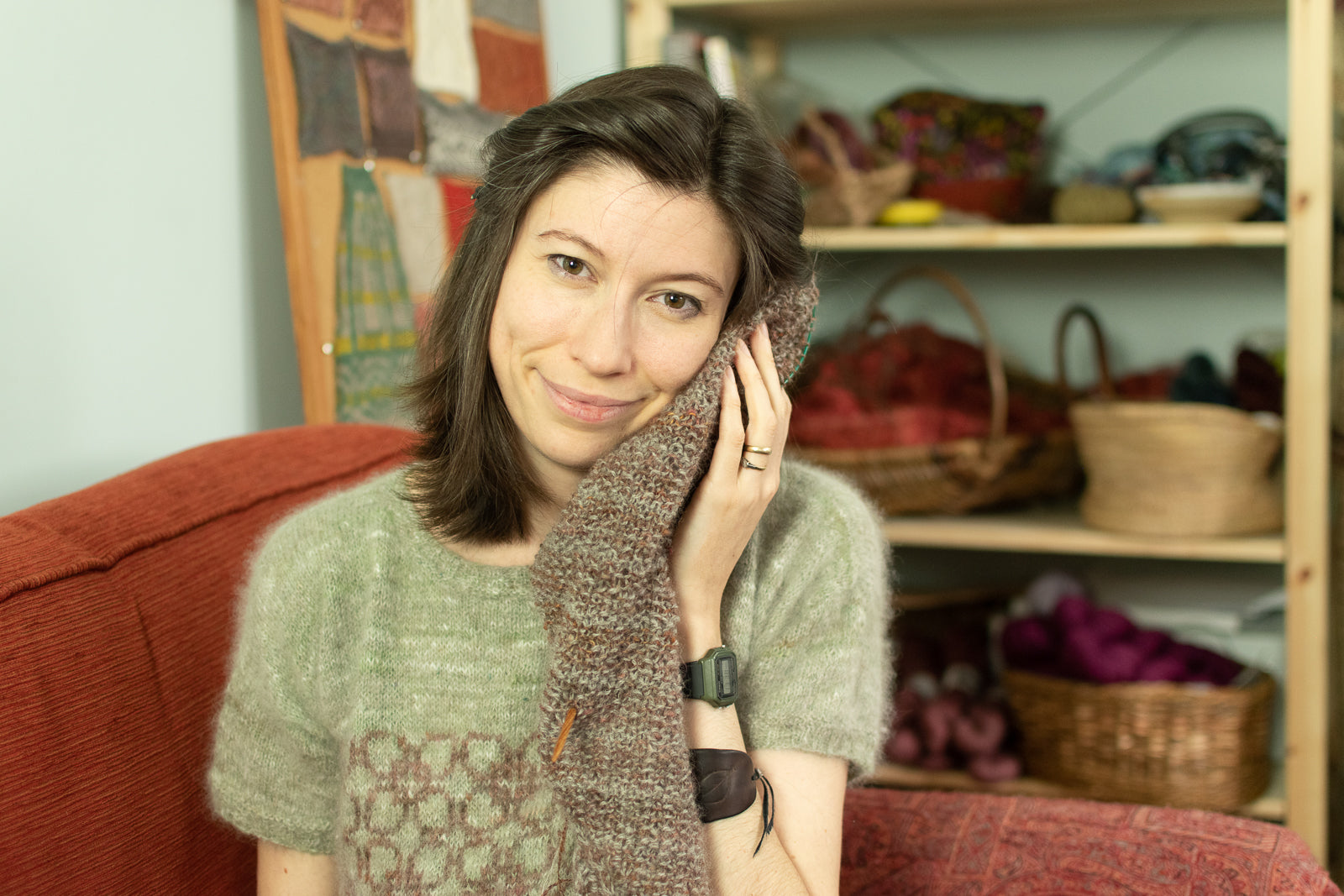A couple of months ago, the lovely people at Wingham Wool Work asked if I’d like to collaborate on a custom blend of naturally coloured British wool. As a yarn dyer and hand-spinner, and advocate for local and native breeds, this sounded like a lovely idea.
Working with breed-specific wool is really interesting, as different breeds can display a startling variety of characteristics, from soft to coarse, smooth to crimpy, and dark to light.
The custom blends Wingham Wool Work produce can include up to five breeds, and I was keen to use this as a chance to try out some wool that I was less familiar with. Softness is far from the most important quality in wool to me, but I did want to include some gentler wools along with more ‘rustic’ fibres with a variety of characteristics, including lots of natural colours. I also wanted to try a few breeds that are local to me in the South-West of England. I sent over a shortlist of breeds I’d like to try, and Ellie at Wingham sent me some small samples of combed tops to spin up.
In this post I’ll be writing about my experience spinning the five breeds that I chose for the blend: Cheviot, Manx Loaghtan, Teeswater, Jacob, and Dorset Horn. The rest (Cotswold, Black Welsh Mountain, Wensleydale and Devon) are included in an extended post on Patreon.
The mini breed study
1. Light Grey Cheviot – springy and crisp

The Cheviot breed has its origins in the Cheviot Hills on the Scottish/English border.
It was an enjoyably toothy fibre to spin; it drafted nicely and has really lovely and unusual three-dimensional crimp to it. The sample yarn I spun has a lot of air trapped in it, which will make it lightweight and warm, and has a slightly wild halo; this could be because there’s quite a variety of staple lengths in the tops.
The colour is a heathery warm, light grey, made up of a broad range of naturally coloured fibres.
The combination of strength and springiness means I’m not surprised to see this fibre used in sock yarns, where the yarn needs to be durable and bouncy to stretch nicely around the foot. (I've written more about the qualities needed in a good sock yarn before.)
2. Manx Loaghtan – soft and dense

I’ve been wanting to try Manx for a long time – it’s a distinctive cinnamon brown colour called Moorit in the sheep world, and comes from the Isle of Man. I found it to be surprisingly fine, with the fibres quite closely packed together. Something about it reminded me a little of mid-brown alpaca, though the Manx has more structure and less drape.
This wasn’t the easiest to draft, possible because of the denseness of the fibres, but it made the most beautifully round, plump yarn.
3. Grey Teeswater – silky and slightly slippery
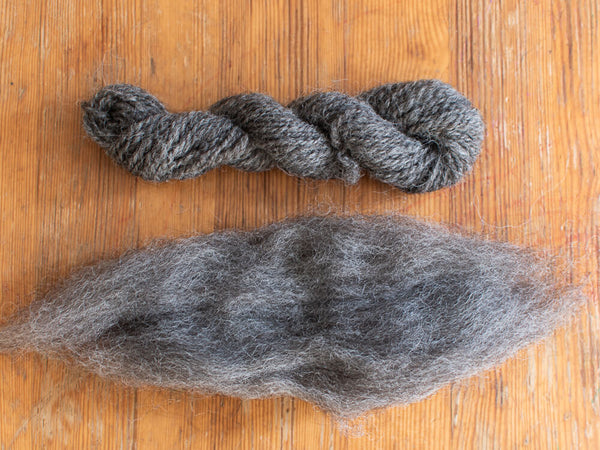
This one was a real surprise, and a little unlike my previous experience with the breed. I’ve processed white Teeswater fleece before; it has very long, distinctive ringlets of locks. The particular fleece I worked with previously was fairly coarse. This grey has the beautiful lustre I’d expect and was as smooth as expected, but much softer (which is particularly noted in Wingham Wool Work’s page on the fibre), and I’ve never encountered the grey colour in Teeswater before. It’s a lovely pewter grey, and gave a yarn with a nice bit of drape, which is to be expected from a lustre breed.
4. Black Jacob – matte and grippy

I’ve wanted to work with Jacob wool for a while, but thus far had only tried it in blends. One blend was with Merino, and the Jacob worked hard to make it a nice spin – I do not enjoy spinning Merino!
Jacobs are very distinctive sheep, with a variety of colours and amazing horns on each animal. Apparently the fibre quality from Jacobs sheep can be extremely variable.
I really enjoyed the lack of lustre and slightly chaotic crimp. Though this fibre was on the coarser end and had a whole lot of friction to it, it was an absolute delight to spin. It drafted out beautifully with little effort, and was a nice speedy spin.
5. Dorset Horn – crimpy and bouncy

I wanted to try Dorset Horn as I live very near to and partially grew up in Dorset, and working with such local breeds is really rewarding. This was my main reason for choosing to sample this wool, but I ended up being floored by it.
The tops itself felt very pillowy if not soft, but was a positive joy to spin. It’s one of the bounciest wools I’ve ever worked with, and made such a round, squonchy yarn.
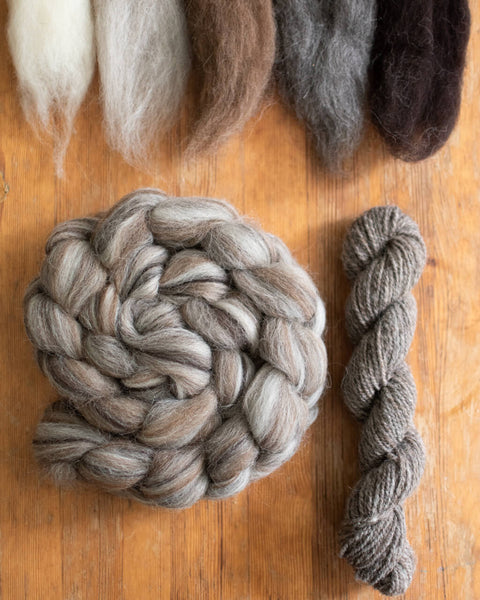
I chose these breeds as they’re the ones I had the nicest time spinning, and wanted to combine their different (and often quite contrasting) characteristics, from the creamy white clouds of Dorset Horn to the lustrous silkiness of the Grey Teeswater. My aim was to create a blend that’s really enjoyable to draft and spin, with a nice balance of strength and softness.
The resulting tops spins up to a warm mid brownish grey with just a little variation in colour throughout, and will be suitable for a really wide range of projects, from socks and mittens to cosy garments.
The Skua blend is available from Wingham Wool Work, and there are small quantities that I’ve hand-dyed in limited edition colours.
